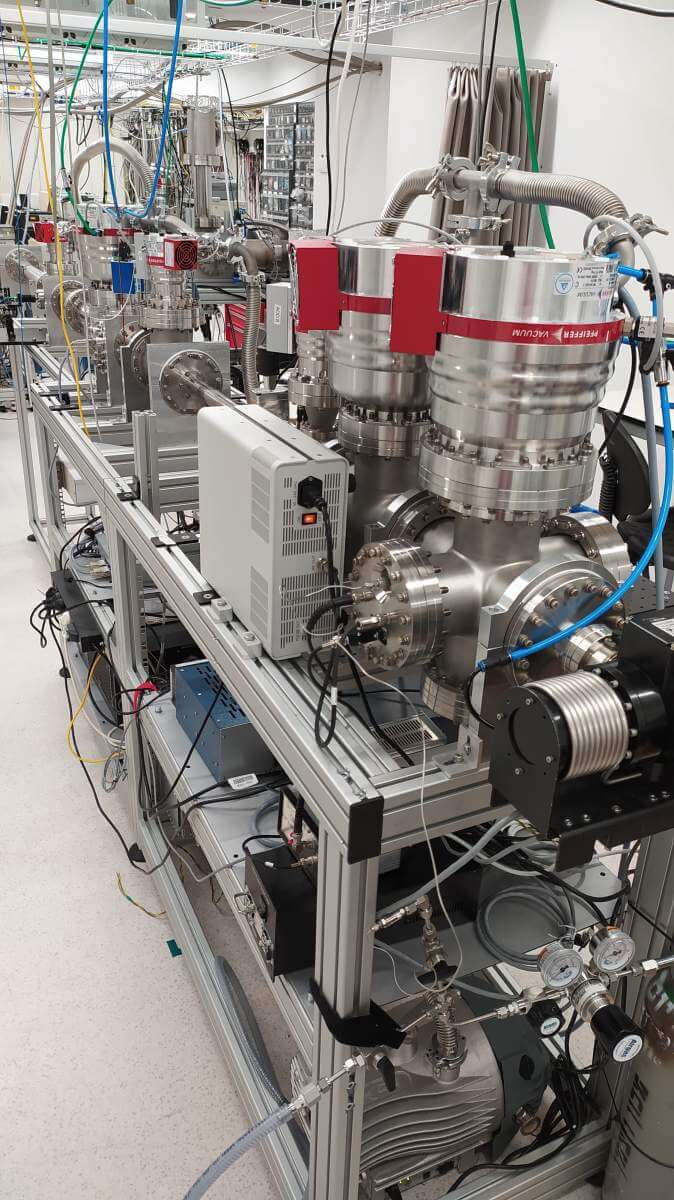The institute's scientists and their research partners from the Technion and Tel Aviv University have for the first time created mixed beams of individual atoms

Hurricanes or typhoons spread over hundreds of kilometers, but eddies can swirl even in much smaller dimensions. Weizmann Institute of Science scientists, in collaboration with researchers from the Technion and Tel Aviv University, Recently created, for the first time, a vortex consisting of a single atom. Atomic vortices of this type may help answer fundamental questions about the subatomic world and even perfect imaging technologies such as atomic microscopy.
For years now, scientists have been trying to produce different types of nanovortices in their laboratories, and recently scientific attention has been focused on trying to produce mixed beams - a stream of rotating particles whose internal structure is even in a whirl. Vortexes of electrons and photons (particles of light) have already been created in the laboratory in the past, but mixed beams of atoms were until recently only a thought experiment. "During a theoretical discussion with Prof. Ido Kaminer from the Technion, we came up with an idea for an experiment that could produce vortices of individual atoms," explains Dr. Yair Segev, who recently completed his doctoral studies in Prof. Edwards (Ed) Narevicius from the department of chemical and biological physics at the institute.
In terms of classical physics, rotating objects are often characterized by a property called angular momentum. Similar to linear momentum, this property describes the total effort required to stop the movement of the moving or in this case the rotating object. However, this property, which characterizes both small and large vortices, undergoes its own "turn" in the transition to the quantum dimension. First, unlike their counterparts from classical physics, quantum particles cannot have any value of angular momentum, but only discrete (quantum) packets. Another difference that characterizes quantum spin is that the spin property itself is not similar to the rotation of a propeller, but more like a wave rotating around its axis.
Similar to a breakwater that directs the flow of sea waves, quantum waves can also be manipulated and shaped. "By placing physical obstacles in the path of the atom, we can manipulate the wave form of the particle and create different wave forms", explains Alon Loski, a doctoral student in the laboratory of Prof. Narevičius. Luski and Dr. Segev, who led this research in collaboration with Ra'a David from their laboratory, collaborated with colleagues at Tel Aviv University to develop an innovative method for shaping the movement of atoms. They created tiny "breakwaters" - ceramic disks with a diameter of several hundred nanometers with engravings in different patterns. When the engravings are in the form of a fork, each atom passing through them behaves like a wave passing through a physical obstacle, gaining angular momentum - and exiting the other side of the obstacle as a vortex. The tiny forks were produced in a nanometric process developed for the experiment by Dr. Ora Biton and Hilla Nadler in the Department of Infrastructure for Chemical Research at the institute.

Now, with the necessary equipment in hand, the researchers aimed an ultrasonic beam of helium atoms in the direction of the nanometer engravings they had created. Even before the smashing on the "breakwaters", the beam passed through a set of tiny slits that prevented some of the helium atoms from moving forward and passed only atoms that resemble large waves in their behavior - and are therefore more convenient for design. When these "wavy" atoms came into contact with the nanometer forks, they were shaped into vortices whose intensity and characteristics were recorded by a detector.
in the eye of the donut
Donut - this is the result obtained as a result of the collision of millions of spinning helium atoms in the detector. "When we saw the donut, we knew we had succeeded in producing swirls of helium atoms," says Dr. Segev. Similar to the "eye of the storm", the hole in the donut is the place where the strength of the waves is equal to zero, so the atoms do not reach there at all. "The images we received are actually the imprint left by the mixed atomic beams," explains Prof. Narevičius.
During the experiments, the researchers noticed a strange observation. "Besides the perfect donuts there were also two 'noise spots'," says Dr. Segev. "At first we thought that the source of the problem lay in our instruments, but after a thorough investigation we realized that what we were seeing were unusual molecules, each consisting of two helium atoms that met in the atomic beam." In other words, the vortices the researchers were able to produce were not only atomic, but also molecular.

Although the researchers used helium atoms, the experimental setup they built can be used to create vortices of other atoms and molecules as well. This array forms the basis for the study of hidden subatomic properties, for example, the distribution of the charge of protons or neutrons may only be revealed when the entire atom is spun. Besides an innovative approach to the study of the basic properties of materials, mixed atomic beams can also be used in a variety of technologies, primarily atomic microscopy. The interaction between the swirling atoms and the material examined under the microscope may lead to the discovery of new properties of the material being studied and reveal valuable information that is not accessible today.
